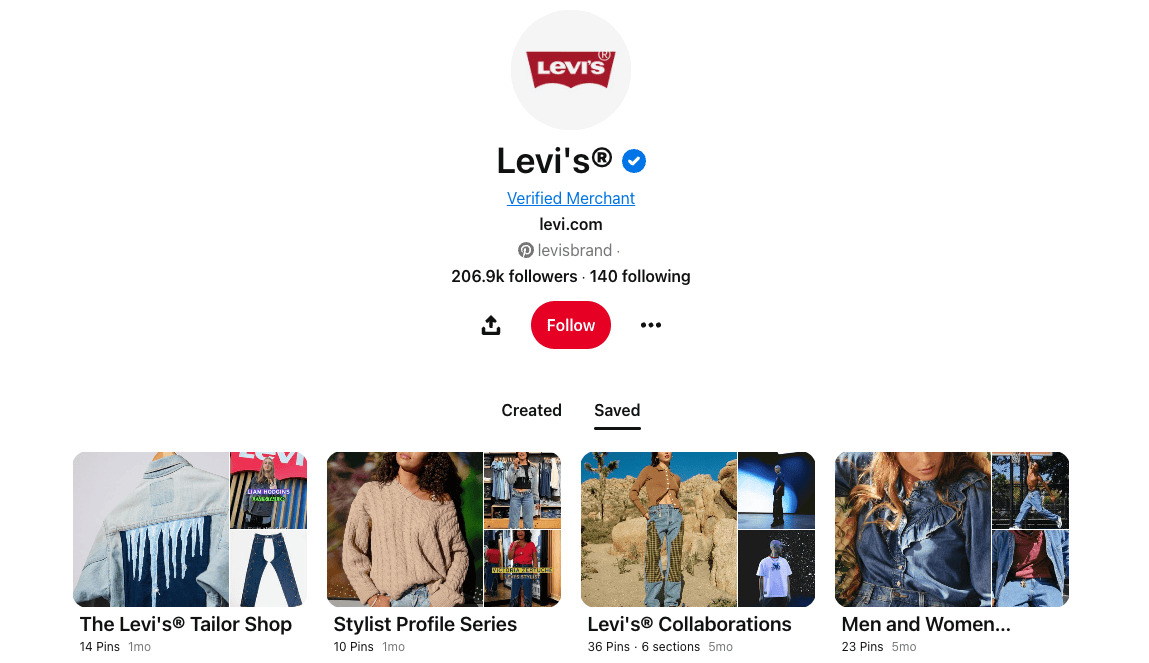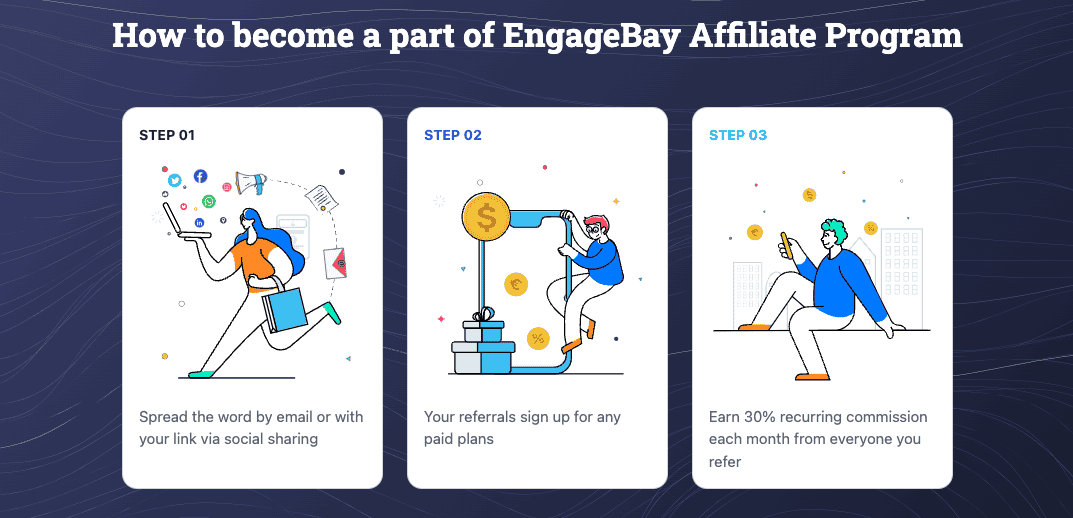A question several marketers are asking is, does affiliate marketing work?
The answer is yes, affiliate marketing works. The global affiliate marketing industry is worth over $17 billion, and 81% of brands use affiliate programs to boost brand awareness and drive sales.
Affiliate marketing offers a low-cost option for businesses to reach their target audience and make sales. With affiliate marketing, you outsource some of your marketing endeavors to affiliates who earn money when they make sales or generate leads.
Let’s say you are considering starting an affiliate program in your eCommerce business. In this blog post, you will learn how to start with affiliate marketing and boost your eCommerce sales through third-party sellers.
Ready? Let’s go!
Table of Contents
Key Takeaways
- With affiliate marketing, you can outsource some of your marketing to third parties called affiliates and give them part of the money you make in sales as a commission.
- The affiliate program you choose as an affiliate determines whether you will succeed or fail.
- When choosing an affiliate program, consider the niche, the business’s reputation, commission structure, cookie lifetime, and terms and conditions.
- The success of your affiliate program depends on how well you can relate with your affiliates.
- If you want to build a strong relationship with your affiliates, stay in touch, offer high AOV products and competitive commissions, and send only relevant messages.
- To succeed as an affiliate marketer, you need to develop a marketing plan that works.
- Common affiliate marketing tactics include search engine optimization, social media and influencer marketing, co-branding and loyalty programs, and seasonal promotions.
- Incorporating technology into affiliate marketing improves its chances of success.
- Artificial intelligence and dynamic content optimization are emerging technologies changing the game in affiliate marketing.
Understanding Affiliate Marketing in eCommerce
Affiliate marketing is a marketing model in which a third party (affiliate) markets a business’ products or services on its affiliate website and gets a percentage of the sales, subscriptions, or traffic generated. It is a symbiotic relationship that improves revenue, reduces investment, and mitigates risks.
Affiliate marketing involves affiliates using digital marketing strategies such as search engine optimization, social media marketing, email marketing, content marketing, and more to drive traffic and generate sales.
Generally, there are three types of affiliate marketing: involved affiliate marketing, unattached affiliate marketing, and related affiliate marketing.
It offers several benefits for the business and the affiliate alike.
Businesses enjoy the success of the affiliates’ marketing endeavors without committing any financial resources.
Additionally, they get to avoid the stress of setting up a marketing strategy and improving on it until it becomes profitable. On the other hand, the affiliates profit from the business through their affiliate link without keeping a physical inventory, handling operations, or customer service.
Components of an affiliate marketing program
Affiliate marketing involves four main components. These are:
- The affiliate: This is the person responsible for running affiliate campaigns to market a business’s products or services and earns a commission when a purchase is made through their custom affiliate link. An affiliate promotes one or multiple affiliate products on their own website.
- The business: The person or entity selling the product or service. It could be digital products like online courses or physical products.
- The affiliate network: Acts as a go-between for a merchant’s affiliate program and an affiliate.
- The customer: This person buys a product via an affiliate. The product can be from the affiliate marketing website using the affiliate link.
How does the affiliate marketing process begin?
For eCommerce business owners who want to start an affiliate marketing program, here are the steps to create one.
Create an affiliate marketing program
To begin the affiliate marketing process as an eCommerce seller, create an affiliate marketing program and decide on the commission structure.
Most affiliate programs offer an affiliate commission between 5% and 30%. One of the biggest challenges for many affiliate marketers when starting their affiliate marketing business is finding the best affiliate deals that suit them.
So, create relevant affiliate programs that can attract successful affiliates.
Outline terms and conditions
Once you have a transparent commission structure, the next phase is to outline terms and conditions for the affiliates.
This way, affiliates can better understand the details of the affiliate program, including payment duration, methods, cookie duration, affiliate product, and marketing guidelines.
For instance, some affiliate programs release affiliate income after 30 days, while some take as long as 90 days.
Join an affiliate network
These services usually come at a price, but they are helpful and can improve the chances of finding credible affiliate marketing partners.
This step is crucial, especially for affiliate marketing beginners. Affiliate networks also help improve collaboration by offering affiliate marketing tools for tracking affiliate revenue, reporting, and payment processing.
Popular affiliate networks include Amazon Associates, ShareASale, CJ Affiliate, Rakuten Advertising, ClickBank, Awin, and FlexOffers.
Provide relevant training
The best affiliate programs train their affiliate program partners to understand their affiliate products and terms and conditions.
They are trained using promotion guidelines and a product guide. Additionally, each affiliate is provided with a unique affiliate link.
Track affiliate progress
It’s important to remember that affiliate marketing takes time. So, you must set realistic revenue goals and expectations from your affiliate partners.
As your affiliates market your products on their affiliate site and promote them across various channels, monitor their performance to ensure compliance with terms and conditions.
Read also: Dropshipping Affiliate Marketing 101 — A Step-by-Step Guide
How to Select The Right Affiliate Programs
Several businesses have affiliate programs, but not all are equally right for you.
Choosing the right program determines your affiliate marketing success and how much passive income you make. Here are some things to consider when choosing an affiliate partner:
The niche
Selecting the right niche is critical to the success of your affiliate marketing efforts. A well-defined niche can significantly impact your profitability by allowing you to target a specific audience that is genuinely interested in what you have to offer.
When choosing a niche, consider your interests, knowledge, and the potential demand within that market.
Start by identifying a niche that aligns with your passion and expertise. This will make the promotion process more enjoyable and position you as a credible source of information for your audience.
Next, research the market demand for your chosen niche.
Utilize tools like Google Trends, social media analytics, and keyword research to gauge interest and identify trends. Look for a niche with a substantial audience but not overly saturated with competitors.
A niche with high demand and low competition is often a sweet spot for profitability, allowing you to capture market share quickly.
Additionally, consider the profitability and longevity of the niche. Some niches naturally offer higher commission rates for promoting products due to the nature of the products or services involved.
For example, niches related to high-ticket items, such as luxury goods or premium software, often yield higher commissions. However, ensure a consistent demand for these products to maintain a steady income stream.
The reputation of the business
The best marketing strategy is a good product.
This applies to affiliate marketing, especially in the current business scene where customers prefer to buy brands, not necessarily products. Therefore, when choosing an affiliate program, you must select brands with a good reputation.
Partnering with businesses that offer premium quality products and services improves your chances of making sales transactions, helps keep your audience satisfied, and builds a long-lasting relationship with them.
Before choosing an affiliate program, take some time to research the merchant. Find out the general opinion of current and former customers.
You can use popular websites such as Google Reviews, Trustpilot, Amazon, Foursquare, Facebook, Twitter, Reddit, Quora, etc., to determine what people think of the business. Do not join affiliate programs of companies with generally bad reviews, as this can hurt your reputation.
Commission structure
Affiliate marketing is a way to start earning passive income without creating your own products.
As such, commissions serve as the cornerstone of the affiliate marketing model. When choosing an affiliate program, ensure you understand its commission structure. Most programs offer percentage commissions on each unit of product or service sold (pay-per-sale). This can range from 5% to 30%, depending on the products you sell.
Beyond the pay-per-sale structure, businesses may offer other payment models, including pay-per-action or memberships and subscriptions.
The former involves affiliates earning a profit when customers take specific actions on the business’ website, such as filling out a form, signing up for an event, making a purchase, etc. Affiliate programs that promote membership and subscriptions may offer recurring commissions when a referred customer renews a subscription.
This may be for a set period or as long as the customer continues to own an account with the business.
Cookie lifetime
Merchants use cookies to track which affiliate referred a customer.
These cookies usually last for a certain period, after which they become inactive. Suppose an affiliate’s cookie becomes inactive before a customer makes a purchase. In that case, the merchant cannot tell where the customer came from, resulting in losses for the referring affiliate.
As cookie lifetime is crucial to earning well as an affiliate marketer, you should choose affiliate programs with a longer cookie lifetime.
The terms and conditions
As with any contract, carefully review the terms and conditions of your partnership.
The requirements and expectations should be clearly stated so that you and the company agree. Occasionally, a condition may be problematic for you and could be a deal breaker. For instance, some affiliate programs limit the amount of sales generated through specific traffic channels.
Others state that affiliates will not receive payment if a transaction is incomplete or canceled, a product is returned, or a subscription is canceled within a specific time.
Considering these criteria when choosing an affiliate program will help you weed out programs that don’t fit. This way, you can focus on quality programs to improve your results and earnings.
Read also: Is Affiliate Marketing Legit? Unmasking Common Myths & Scams
How to Build Effective Affiliate Relationships
Much of affiliate marketing’s success depends on the strength of the relationships formed.
This is true for both the merchant and the affiliates. For merchants, fostering a strong relationship with their affiliates will help build trust and credibility, prompting affiliates to promote products more eagerly.
Here are some tips on building strong relationships with your affiliates:
Get to know your affiliate marketers
Spending time getting to know your affiliates has numerous advantages, so make the effort to do so. This guarantees you locate the best possible affiliates to support your business and promote what you want.
When your affiliates respond to questions on your affiliate registration form, note their names, backgrounds, interests, and any other little nuggets of information they may share with you.
It also helps to check their social media accounts to see who they follow and what interests them. Connect these topics to potential dialogue topics.
This will facilitate establishing a long-lasting rapport.
Stay in touch frequently
After getting to know your affiliate partners, it’s critical to communicate with them often. This will keep your relationship healthy and keep you informed about how things are progressing.
You will also stay abreast of current challenges and offer solutions when necessary.
Additionally, it guarantees that you remain in their minds and can inform them of any forthcoming promotions or exclusive offerings they should know about. Your relationship with your affiliates will be stronger if you care and keep them updated.
Offer high AOV products and competitive commissions
Building and maintaining an effective relationship with your affiliates has much to do with how lucrative your affiliate program is.
Most affiliate marketers will gravitate toward programs that offer competitive commissions. As such, when setting up your affiliate program, it is essential to provide a competitive commission structure to attract the best affiliates.
This is especially helpful when you’re just starting out, as affiliates can spread the word about your juicy offer, resulting in more signups and, ultimately, more sales.
Another way to get the cream of the crop affiliates is to offer products with a high average order value. These products are typically pricey and do not sell as fast.
However, they are more lucrative for affiliates as the higher prices translate to more money made on commissions. Consider including products in your store with high AOV when setting up an affiliate program.
It may not make sense to sell only high AOV products, but mixing them up with other products will go some way toward pulling the best affiliates to your program.
Tailor your communication
An average affiliate program has different types of affiliates partnering with a business, from micro-influencers to digital publications.
This necessitates different kinds of engagements within the program. To build a strong relationship with your affiliates, you should separate them into various groups based on their features. Then, you should only send promotions that fit their unique features.
This way, every affiliate gets the appropriate information without dealing with a deluge of useless info.
Provide the right tools and resources
Offering the right tools to your affiliates makes their job easier and improves their chances of success.
As such, you should provide your affiliates with the necessary tools and resources. Here are a list of tools and resources to offer your affiliates:
- Discount codes: Discount codes are a great incentive for customers to buy from an affiliate. Studies show that almost 40% of customers will purchase earlier than planned if they have a coupon.
- They need an easy-to-use method for creating and distributing referral URLs that automatically send customers to affiliates and even apply coupons.
- Affiliate marketing assets (creatives), like a free ebook, banners, graphics, and brand guidelines.
- A location where they may monitor commission and get comprehensive statistics.
- A location where they can quickly request and see their future rewards.
Provide them with these resources through an intuitive affiliate dashboard so they won’t have to spend long hours, which can get tedious.
This action will empower your affiliate marketers to meet their targets.
Strategies for Effective Affiliate Marketing
The global affiliate marketing industry is a major player in the eCommerce industry, currently worth over a billion dollars.
It accounts for 16% of all internet orders in the U.S. and grows at 10% year-over-year. By 2027, the market is expected to expand to $27.78 billion. The average affiliate marketer earns $8,038 per month, demonstrating the lucrative potential of this marketing model.
To harness this potential, it is crucial to have an affiliate strategy to promote products and boost sales transactions.
Some product promotion strategies include search engine optimization, engaging social media influencers, exploring innovative marketing techniques, and planning seasonal and promotional marketing campaigns.
Let’s discuss these strategies in detail.
1. Search engine optimization
Almost 80% of all affiliate marketers use search engine optimization as their primary traffic source, which proves that SEO is a cornerstone tactic in affiliate marketing.
SEO’s popularity among affiliate marketers may be attributed to its low cost and effectiveness compared to other marketing strategies. Another factor is that SEO is an excellent way for affiliates to show their knowledge about an affiliate product.
With SEO, affiliates offer value to customers, share affiliate links, and get a commission on each sale.
Search Engine Optimization (SEO) is optimizing your website to improve its visibility on search engines like Google.
When done correctly, SEO can drive organic traffic to your site, make your brand more popular, and increase your sales. Given that most online experiences begin with a search engine, a well-executed SEO strategy is crucial for any affiliate marketer aiming to succeed online.
How to develop an SEO strategy
Developing an SEO strategy begins with understanding your target audience.
A clear understanding of your target audience helps you understand their journey from the moment they learn about your business to becoming loyal customers. It also lets you identify keywords and intents through different buyer journey stages.
Once you understand your audience, the next phase should be identifying keywords that align with your target audience and their purchasing intent.
You can use tools like Google Keyword Planner, Ahref, SEMrush, Ubersuggest, and more to find out what your audience is searching for.
Your selected keyword should align with your audience’s intent and have a high volume and low competition. You want to avoid competing with big brands with high domain authority and a large following. You can use the tools listed earlier to do a competitive analysis, or you can do it manually.
Once you have your high-volume-low-competition keyword, the next phase is to create content using this keyword. It is essential to stick to SEO best practices for on-page, off-page, and technical SEO, including:
- Ensuring quality content
- Writing meta tags and title tags
- Optimizing for mobile-friendliness
- Improving website speed
- Linking web pages to others within your website and other websites
Search engine optimization does not stop after you create and publish the content. For your SEO strategy to succeed, you must regularly monitor and improve results based on analytics.
Tools like Google Analytics and Google Console are used to track key metrics such as organic traffic, bounce rate, average session duration, and conversion rate.
Once you are done, carefully analyze the collected data to identify areas for improvement. Monitor your keyword rankings and backlink profile to ensure your SEO efforts pay off.
2. Social media and influencers
With more than half of the world’s population (62.6%) now using social media, totaling 5.07 billion users, the potential for reaching a vast audience through social media has never been more significant.
An additional 259 million people joined social media platforms in the past year alone, and the average daily time spent on social media is 2 hours and 20 minutes. A careful look at the numbers will open your eyes to the possibilities social media platforms offer affiliate marketers to reach more people and make more money.
Collaborating with influencers to reach more people and gain their trust
When you partner with influencers you expose your business to more people and appear more credible.
Influencers can sway their followers’ purchasing decisions, making them valuable partners in promoting your affiliate products. According to Influencer Marketing Hub, influencer partnerships can lead to higher engagement rates and increased trust among potential customers.
To maximize the benefits of these partnerships, choose influencers whose audience aligns with your target market and whose values resonate with your brand.
Best practices for integrating social media promotions with affiliate efforts
Integrating social media promotions into your affiliate marketing strategy involves several best practices.
Create engaging content
Develop compelling and visually appealing content that captures attention and encourages sharing.
This goes beyond written content.
For example, you can create YouTube videos, infographics, and interactive stories that your target audience will find helpful and suggest products as solutions to the challenges your target audience faces.
Utilize multiple platforms
Don’t limit yourself to one social media platform.
Each platform has its unique audience and strengths. Use a combination of Facebook, Instagram, Twitter, and Pinterest to reach a broader audience. Focus on social media platforms that your target audience uses frequently.
Incorporate affiliate links
Place affiliate links where they naturally fit, such as within blog posts, video descriptions, or swipe-up links on Instagram stories.
Ensure that these links are easily accessible but not overly intrusive.
Engage with your audience
Respond to comments, participate in conversations, and encourage user-generated content to build a community.
Engagement helps build trust and loyalty among your audience.
Track and analyze performance
Use analytics tools to monitor the performance of your social media campaigns.
Track click-through rates, conversion rates, and overall sales generated through your affiliate links. Use this data to refine your strategies and improve future campaigns.
By effectively utilizing social media and influencers, you can amplify your affiliate marketing efforts, drive more traffic to your offers, and increase overall sales.
3. Co-branding
Co-branding, sometimes called a brand partnership, is a marketing tactic when two or more companies ally the advantage of all involved.
Under this arrangement, partners combine resources such as capital, technology, and experience to develop a new good or service that offers clients something extra. Usually, this product has a distinct brand name and emblem of its own.
Companies with similar values, missions, and target customer markets frequently form brand partnerships.
Partners in successful co-branding initiatives may benefit from higher revenue, improved reputations, and a broader consumer base. Because all partners assume the risk of loss by entering into this agreement, this method may be more financially feasible than other marketing initiatives.
The benefits of co-branding include:
- Access to new customer segments
- Shared marketing costs
- Leveraged strengths of both brands
- Differentiation from competitors
- Higher perceived value of products/services
- Increased sales opportunities
Examples of co-branding
Below are some examples of Co-branding:
Balenciaga & Crocs

Since its creation in 2002, Crocs has disrupted the fashion industry, bringing stylishness into everyday footwear.
Recently, it has become a staple for people of all ages who want to appear stylish without sacrificing comfort. Partnering with Balenciaga has taken style even further, appealing to a wider audience of stylish fashionistas who enjoy the finer things of life, all without changing the core of Crocs’s appeal and comfort.
This partnership introduces both brands to a wider audience and increases the likelihood that loyal customers of one brand will also become loyal customers of the other.
GoPro and RedBull

Red Bull is no stranger to sports fans all over the world.
It is a brand that gives you wings and collaborates with the biggest names in various sports events, from F1 to football and everything in between. Redbull has partnered up with GoPro to help fans capture their favorite sporting moments on the go.
With this partnership, GoPro will gain access to almost 2000 Red Bull events across more than 100 countries.
Levi’s and Pinterest
Pinterest is the biggest online platform for creatives to find inspiration for their next big idea.

Levi’s, the American fashion brand known for its blue denim jeans, tailored slacks, jackets, hats, shirts, skirts, and belts, has collaborated with Pinterest to reach fashionistas out to try new things.
This partnership lets Levi’s reach new customers by offering personalized styling ideas through Pinterest.
4. Cashback and loyalty platforms
Cashback and loyalty platforms effectively boost customer retention and conversion rates.
If you offer your customers part of their money back when they make a purchase or include a reward for repeat purchases, they will be tempted to buy from you again and again. They will also feel more appreciated and so become loyal to your brand.
According to an AOK marketing report, integrating cashback and loyalty programs into your affiliate marketing strategy can increase customer satisfaction and long-term retention.
5. Leverage technology for success
Technological advancements have created new possibilities in affiliate marketing.
They make it easier to reach customers with the right promotional materials and increase the likelihood of their making a purchase.
Here are some of the most innovative technologies and their effect on affiliate marketing.
Artificial intelligence
Artificial intelligence has made it possible for affiliate marketers to understand their audience more than ever. Today, AI allows you to analyze big data to identify patterns and preferences.
This enables you to deliver more relevant content to your consumers. Because content has become more relevant, customers engage more with brand promotions and buy more from them.
Dynamic content optimization
Dynamic content optimization has become a cornerstone of effective affiliate marketing.
With dynamic content optimization, you can automatically change the content of their websites, emails, and ads to match the interests and behaviors of individual users. For instance, if users frequently browse sports equipment, dynamic content optimization can adjust the website to showcase sports-related products.
This personalization makes the content more engaging and encourages users to act, whether purchasing or signing up for a newsletter.
6. Maximise seasonal promotions
Seasonal promotions are a cornerstone of successful affiliate marketing strategies.
When you plan special promotions around peak periods when customers are ready to spend more money, you can generate more sales and make more money.
Recognizing the impact of seasons on consumer behavior allows you to craft targeted campaigns that resonate with your audience.
Here’s how to execute a seasonal and promotional strategy:
Identify key seasons and holidays
Understanding the principal seasons and holidays influences your customers’ spending. This boils down to knowing your target audience and what seasons and holidays they enjoy more.
From Black Friday and Cyber Monday to Christmas and Valentine’s Day, these periods present unique opportunities to engage your audience. Craft promotions that leverage the excitement and increased spending during these times to drive sales and boost affiliate performance.
Develop timely promotions
To capture seasonal interest, create promotions relevant to the time of year.
This could involve special discounts, limited-time offers, or seasonal product bundles. For example, offer holiday-themed discounts or exclusive deals during peak shopping periods. This helps maintain relevance and appeal to your audience.
Create ad campaigns to support affiliate sales
Effective ad campaigns and promotional materials are vital for supporting your affiliates and driving conversions.
High-quality creative assets and compelling content are essential components of successful campaigns.
Provide customizable templates
Offer your affiliates customizable templates for ads, social media posts, and email campaigns.
This flexibility allows affiliates to tailor the content to their audience while maintaining brand consistency. Customizable templates also streamline the affiliates’ creation process.
Offer incentives and bonuses
Motivate your affiliates by providing additional incentives or bonuses for exceptional performance during promotional periods.
This can include higher commissions, performance-based rewards, or exclusive perks. Recognizing and rewarding top-performing affiliates encourages continued effort and higher sales.
By strategically planning and implementing seasonal promotions and crafting engaging ad campaigns, you can strengthen your affiliate marketing strategy, boost engagement, and realize substantial sales growth year-round.
7. Measure success and ROI
To measure the success of your affiliate marketing program, you need to use advanced tools and metrics that offer a clear insight into your performance.
Key performance indicators (KPIs) such as click-through rates (CTR), conversion rates, average order value (AOV), and return on ad spend (ROAS) are essential for evaluating the effectiveness of your campaigns.
To ensure your affiliate marketing efforts yield the desired results, regularly analyze the return on investment (ROI). You can know how profitable your affiliate marketing is by comparing how much money you made versus how much you spent.
To improve profitability, change the parts of your affiliate marketing strategy that are not fruitful and pay more attention to the parts that yield more results.
Your decisions should not be based on impulse but on the insight you gained from analyzing the collected data.
Earn 30% Recurring Commission with EngageBay’s Affiliate Marketing Program
We have our own affiliate marketing program!
With EngageBay, you can earn a 30% recurring commission every month as long as the referral subscribes to one of our paid plans.
If you’re interested, you can learn more about our program here.
Conclusion
Affiliate marketing is a partnership between businesses and affiliates that allows the affiliates to promote the business’s products and services for a percentage of the sales.
As a marketing model, it mitigates risks for the company and the affiliate while providing substantial income for all parties involved.
The success of affiliate marketing today and in the future depends on how well affiliates embrace emerging technologies such as artificial intelligence and dynamic content optimization.
When adopted as a marketing strategy, these technologies will help affiliates stand out and increase sales.
EngageBay is an all-in-one marketing, sales, and customer support software for small businesses, startups, and solopreneurs. You get email marketing, marketing automation, landing page and email templates, segmentation and personalization, sales pipelines, live chat, and more.
Sign up for free with EngageBay or book a demo with our experts.
Frequently Asked Questions (FAQ)
1. What are the most effective affiliate marketing strategies for eCommerce in 2024?
The most effective affiliate marketing strategies include search engine optimization, social media, influencer marketing, co-branding, and setting up loyalty programs.
You can also consider executing a dynamic content optimization campaign to ensure that you provide customers with personalized content.
2. How do I choose the right affiliates for my eCommerce business?
To choose the right affiliates for your eCommerce business, identify partners whose audience aligns with your target market.
From the affiliates you find, pick only those who are authentic and have a lot of organic followers who engage with their posts. Compare the number of followers they have to how many engagements their posts generate.
You should also look out for their content quality and how well they have performed in similar niches.
3. How can I ensure my affiliate marketing aligns with my brand values?
Pick only those affiliates that share the same values with your brand. Then, discuss your brand values with them and find out if they are on the same page as you.
Once you are sure you share similar values, provide them with guidelines and every other resource they need to put your brand in a good light.
4. What are the common eCommerce affiliate marketing pitfalls, and how can I avoid them?
Common pitfalls in affiliate marketing include choosing the wrong affiliates, lack of clear communication, ignoring performance data, and underestimating the importance of building a solid relationship with your affiliates.
As an eCommerce store running an affiliate program, it is pertinent that you screen your affiliates to ensure that they align with your brand values.
You must also look into their history to understand patterns and common challenges they may face marketing your products. This will help you determine if they are a good fit for you.

